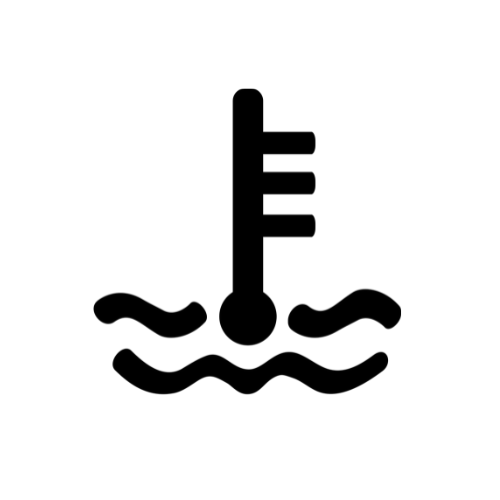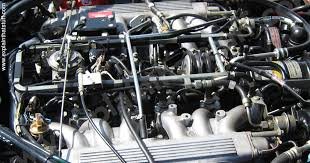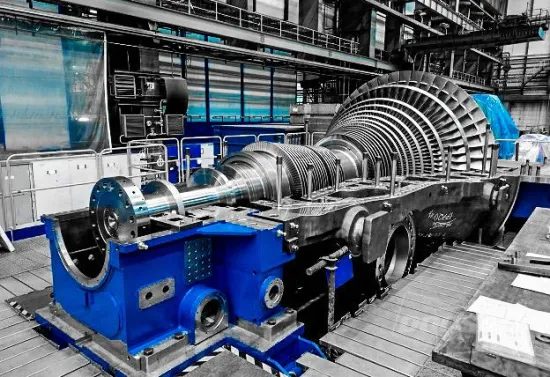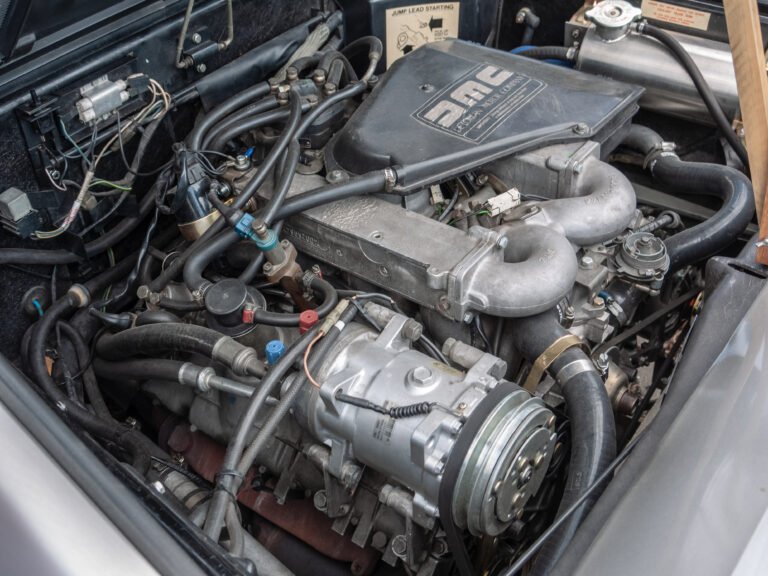Can No Coolant Cause Car to Not Start? Myth-Busting Facts!
No coolant can cause a car not to start as it can lead to engine overheating. Without coolant, the engine can seize up, preventing the car from starting.
This vital fluid helps regulate the engine temperature, ensuring it runs smoothly. If the coolant level is low or non-existent, the engine can overheat, causing significant damage that may prevent the car from starting. In addition, coolant also helps in preventing corrosion and lubricating the water pump, essential for the engine’s overall functionality.
Therefore, it is crucial to regularly check and maintain proper coolant levels to avoid potential starting issues and costly repairs.
Introduction To Coolant’s Role In Vehicle Operation
As a car owner, it’s important to understand the different components of your vehicle and how they work together. One crucial component is the coolant, which plays a vital role in keeping your engine running smoothly. In this article, we’ll explore the essential functions of coolant and common misconceptions about it. We’ll also answer the question, “Can no coolant cause a car to not start?”
Essential Functions Of Coolant
Coolant is a liquid that circulates through your engine and helps regulate its temperature. It performs several essential functions, including:
- Preventing overheating: The engine generates a lot of heat, and without coolant, it can quickly overheat and cause serious damage. Coolant absorbs heat from the engine and carries it away.
- Preventing freezing: In cold temperatures, coolant prevents the engine from freezing and cracking. It has a lower freezing point than water, so it’s essential to use the right coolant mixture for your climate.
- Lubricating components: Coolant also lubricates various parts of the engine and helps prevent corrosion and rust.
Common Misconceptions About Coolant
There are several common misconceptions about coolant that are important to address:
| Misconception | Fact |
|---|---|
| Coolant only needs to be changed every few years. | Coolant should be flushed and replaced every 2-3 years or according to your vehicle manufacturer’s recommendations. |
| You can use water instead of coolant. | While water can be used in an emergency, it’s not recommended for long-term use. Coolant has additives that help lubricate and protect the engine. |
| All coolants are the same. | There are different types of coolant, such as ethylene glycol and propylene glycol, and they have different properties. Make sure to use the right type of coolant for your vehicle. |
Now that we’ve covered the essential functions of coolant and common misconceptions, let’s answer the question, “Can no coolant cause a car to not start?”
The answer is yes. If your engine overheats due to a lack of coolant, it can cause serious damage to the engine components. In some cases, the engine may not even start due to overheating. It’s essential to check your coolant levels regularly and top them up as needed.
The Science Behind Coolant And Engine Start-up
When it comes to starting your car, the role of coolant in the engine’s operation is often overlooked. However, the science behind coolant and engine start-up is crucial for understanding why a car may fail to start when there is no coolant. Let’s delve into the relationship between coolant and the engine’s functionality to uncover the reasons behind a car’s failure to start in the absence of coolant.
How Coolant Affects Engine Temperature
Coolant plays a pivotal role in regulating the engine’s temperature, preventing it from overheating or reaching excessively low temperatures. Without coolant, the engine can quickly overheat, leading to potential damage or failure to start.
The Interplay Between Coolant And Engine Mechanics
The engine’s mechanics rely on the presence of coolant to maintain an optimal temperature for combustion and operation. In the absence of coolant, the engine’s components can experience thermal stress, affecting their functionality and potentially causing the car to fail to start.
Myth Vs. Fact: The Coolant Conundrum
Myth vs. Fact: The Coolant Conundrum
Debunking Myths About Coolant And Engine Start
Contrary to popular belief, the absence of coolant does not directly cause a car to not start. Rather, the primary function of coolant is to maintain the engine’s operating temperature, preventing it from overheating. In reality, there are several other factors that can contribute to a car’s failure to start, and coolant levels are just one piece of the puzzle.
Real Cases Where Coolant Impacts Start-up
While the lack of coolant may not directly prevent a car from starting, there are instances where coolant-related issues can indirectly affect the start-up process. For example, a leak in the cooling system may lead to electrical malfunctions, which can, in turn, hinder the car’s ability to start. Additionally, if the engine overheats due to low coolant levels, it can cause internal damage that affects its overall performance.
Symptoms Of Low Or No Coolant
Low or no coolant can lead to a car not starting due to engine overheating. Symptoms include steam from the hood, temperature gauge in the red zone, and potential engine failure. Regularly check and maintain coolant levels to prevent issues.
Warning Signs Your Car Is Low On Coolant
If you suspect that your car may be low on coolant or has no coolant at all, there are several warning signs to look out for. These indicators can help you determine whether your car’s coolant level is insufficient and potentially causing issues with starting the engine. By being aware of these signs, you can take prompt action and prevent further damage to your vehicle.

1. Engine Overheating:
One of the most obvious symptoms of low or no coolant is engine overheating. When there is not enough coolant circulating through the engine, it cannot properly regulate its temperature. As a result, the engine may start to overheat, leading to potential damage and even engine failure if not addressed promptly.
2. Steam or Smoke from the Hood:
If you notice steam or smoke coming from under the hood of your car, it could be a sign of low coolant. When the engine gets too hot due to insufficient coolant, the excess heat can cause the coolant to evaporate and create steam. This steam may escape from the radiator cap or other areas, resulting in visible vapor or smoke.
3. Coolant Leak:
Finding a coolant leak is another indication that your car may be low on coolant. Look for puddles of fluid underneath your vehicle, especially near the front. Coolant leaks can occur from various parts of the cooling system, such as hoses, radiator, water pump, or even the engine itself. Identifying and fixing the leak is crucial to prevent further coolant loss and potential engine damage.
4. Dashboard Warning Light:
Modern cars are equipped with warning lights on the dashboard to alert drivers of potential issues. If your car’s coolant level is critically low, a coolant warning light may illuminate on the dashboard. Pay attention to any warning lights and consult your vehicle’s manual for specific information on what each light signifies.
Does No Coolant Mean No Start?
While low or no coolant can cause various engine problems, it does not necessarily mean that your car won’t start. The primary function of coolant is to regulate the engine’s temperature and prevent overheating. However, the starting process involves other components such as the battery, ignition system, and fuel supply.
If your car won’t start, it is essential to consider other potential causes before solely attributing it to a lack of coolant. Factors like a dead battery, faulty starter motor, ignition issues, or fuel system problems can also prevent your car from starting. Therefore, it is crucial to diagnose the exact cause of the starting problem rather than assuming it is solely due to coolant levels.
In summary, being aware of the symptoms of low or no coolant is vital for maintaining the health of your car’s engine. Engine overheating, steam or smoke from the hood, coolant leaks, and dashboard warning lights are all indicators that your coolant level may be insufficient. However,
if your car doesn’t start, it may be caused by other factors in addition to low coolant. It is always recommended to consult a professional mechanic to accurately diagnose and resolve any starting or coolant-related issues.
Potential Damages From Running Without Coolant
Running a car without coolant can lead to potential damages such as overheating the engine, causing it to seize and potentially preventing the car from starting. Without coolant, the engine can overheat, damaging vital components and resulting in costly repairs.
Always ensure the coolant level is maintained to avoid these issues.
Long-term Risks To Your Engine
Running a car without coolant can have severe long-term consequences for your engine. Without proper cooling, the engine can overheat, causing damage to various components. Here are some potential risks you need to be aware of:
1. Engine Seizure: Continuous running without coolant can lead to engine seizure. When the engine overheats, the metal parts expand, causing them to seize or lock up. This can result in significant engine damage and costly repairs.
2. Blown Head Gasket: The head gasket is responsible for sealing the combustion chamber and preventing coolant from leaking into the engine. Without coolant, the engine can overheat, causing the head gasket to fail. A blown head gasket can lead to coolant and oil mixing, decreased engine performance, and potential engine failure.
3. Warped Cylinder Head: Overheating caused by lack of coolant can warp the cylinder head, which is responsible for housing the valves and pistons. A warped cylinder head can lead to poor compression, engine misfires, and decreased power output.
4. Cracked Engine Block: Extreme overheating without coolant can cause the engine block to crack. This is a serious issue as it can lead to coolant and oil mixing, loss of compression, and ultimately, engine failure.
Immediate Threats To Vehicle Functionality
Apart from the long-term risks, running a car without coolant can also pose immediate threats to the functionality of your vehicle. Here are a few immediate issues you may encounter:
1. Loss of Power: When the engine overheats, it can go into a limp mode or even shut down completely. This can leave you stranded on the road and require immediate attention from a mechanic.
2. Steam and Smoke: Without coolant, the engine temperature can rise rapidly, resulting in the release of steam and smoke from the engine compartment. This is a clear indication of overheating and should not be ignored.
3. Increased Wear and Tear: Overheating due to lack of coolant puts additional stress on engine components, leading to increased wear and tear. This can result in premature failure of parts such as the water pump, radiator, and thermostat.
4. Fluid Leaks: Running a car without coolant can cause leaks in the cooling system. These leaks can lead to a loss of coolant, further exacerbating the overheating issue.
Remember, ignoring the importance of coolant can have severe consequences for your car’s engine and overall functionality. Regular maintenance and timely coolant checks are crucial to ensure the longevity and reliability of your vehicle.
When Coolant Levels Affect Starting The Car
Situations Where Coolant May Prevent Starting
Low coolant levels can lead to engine overheating, which in turn can cause the car to not start. In extreme cases, the lack of coolant can lead to damage to the engine components, resulting in starting issues.
When the engine is too hot due to insufficient coolant, the metal components can expand, causing the engine to seize and preventing it from starting. Additionally, a lack of coolant can lead to a malfunctioning thermostat, which may further exacerbate starting problems.
Why Some Engines Start Despite Low Coolant
Some cars may still start despite low coolant levels due to the engine not reaching the critical temperature threshold. However, this can lead to increased wear and tear on the engine, potentially causing long-term damage.
In some cases, the engine’s temperature sensor may not accurately detect the lack of coolant, allowing the car to start even though the coolant levels are insufficient. This can create a false sense of security for the driver, as the engine may be at risk of damage.
Proper Coolant Maintenance For Reliable Start-ups
Proper coolant maintenance is crucial for reliable car start-ups. Without coolant, the engine can overheat and potentially lead to the car not starting. Regularly checking and topping up coolant levels ensures smooth and dependable performance.
Checking And Topping Off Coolant
Regularly check coolant levels to prevent overheating.
Top off coolant as needed to maintain proper levels.
Use a 50/50 mix of coolant and water for best results.
Routine Coolant System Service
Flush and replace coolant every 2-5 years for optimal performance.
Inspect hoses and connections for leaks or damage regularly.
Keep radiator clean to ensure efficient cooling system operation.
Troubleshooting Start-up Issues Beyond Coolant
While a lack of coolant can indeed cause a car not to start, there are other potential culprits to consider. It’s essential to explore additional reasons for start-up failures to ensure your vehicle runs smoothly.
Other Causes For Start-up Failures
Beyond coolant levels, issues like a drained battery or faulty starter could prevent your car from starting. Inspect the battery and starter to rule out these common problems.
When To Seek Professional Assistance
If you’ve checked all possible causes and your car still won’t start, it’s time to seek help from a professional mechanic. They have the expertise to diagnose and fix complex issues effectively.
Conclusion: The Verdict On Coolant And Starting Your Car
Can no coolant cause a car to not start? Yes, it can. Lack of coolant can lead to engine overheating, resulting in starting issues. Summarizing the impact of coolant on start-up:
Summarizing The Impact Of Coolant On Start-up
- Coolant is crucial for regulating engine temperature.
- Low coolant levels can cause engine overheating.
- Overheating can lead to starting problems and engine damage.
Final Tips For Ensuring Your Car Starts Every Time
- Regularly check and top up coolant levels.
- Address any leaks promptly to prevent coolant loss.
- Follow the manufacturer’s recommended coolant type.
- Maintain your car’s cooling system for optimal performance.
Conclusion
Based on the evidence presented, it is clear that a lack of coolant can cause a car to not start. Coolant serves a vital role in regulating the temperature of the engine, and without it, the engine may overheat and fail to start.
It is important to regularly check and maintain the coolant levels in your car to avoid this issue. Remember, prevention is always better than cure. So, keep an eye on your coolant levels and ensure that your car is always running smoothly.

At CoolantInCar, we are dedicated to demystifying the world of engine coolant and cooling systems.


